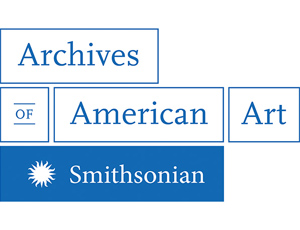A Conversation and Screening About Loft Life and Space-Making in the 1970s Inaugurates a New Series on January 7
/https://tf-cmsv2-smithsonianmag-media.s3.amazonaws.com/blogging/featured/still_wiegand_walking.jpg)
When I first saw the Robert Wiegand papers and video art collection at the Archives of American Art, I was initially drawn to it because of the large amount of videos in the collection. As an archivist trained in working with the unique concerns of audiovisual formats, film and video among them, I was intrigued by the collection’s substantial video materials (six boxes out of eight were video). Now, after fully processing the collection as part of the CLIR “Hidden Treasures” grant project, I realize that the videos, while not the entire story of Robert Wiegand’s contribution to the art world, add to the history of video art in a way that deserves to be highlighted.
Robert Nelson Wiegand was an artist, an arts programmer, an advocate, a teacher, and a documenter of the arts around him. As a painter influenced by the Abstract Expressionist movement, he was very involved in the artist community in SoHo and became one of the major advocates for legalizing the first artists’ lofts as live/work spaces in lower Manhattan in the 1960s, an event that effectively changed the landscape of the area and New York City at large. Wiegand became interested in video technology after using it as a tool to organize and advocate for the artists’ lofts.
The video art works in the collection were made in collaboration with Wiegand’s first wife Ingrid Wiegand. They began making video art in the 1970s just as it was entering the art world, when Nam June Paik came to video from performance art and Steina and Woody Vasulka migrated from music and engineering. It was a time when highlighting the mechanical nature of video was a focus for artists experimenting with the medium. Bob and Ingrid’s works draw attention to the process of video creation as a consistent theme; the technical qualities of the medium—its capabilities and its boundaries—are the real subjects and characters.
One of the earliest works, Georges, directs intentional video and audio feedback at the video’s protagonist, Georges Noel, as he speaks about his work. Julie, as documentation of dancer Julie Finch, utilizes two cameras and a switcher to fade and layer shots of her dancing, highlighting Finch’s choreography. In Moran, Tom Lillard performs an emotional monologue from Samuel Beckett’s novel Molloy. Wiegand uses dissolves to parallel the character’s emotions. In these works, the technology of the medium is used to interact with and parallel the performances.
The Wiegands also used video to make works that challenged audience reception. In Omar is El Uno, five audio tracks are layered to create an entirely unique but challenging audio experience. Face-Off features Robert and Ingrid Wiegand on separate monitors explaining to viewers the mechanical nature of video, while simultaneously exploring the nature of relationships with its use of comedy.
In Walking (interstices), Ingrid Wiegand layers video to help tell the story of her daily life, using the technology’s unique capabilities to create the layered narrative. But Walking (interstices) also includes a scene where Ingrid talks to Robert, while he is painting, about the creation of the video itself as an artwork—as it is being created—allowing the work to also comment on how we live with the technology as part of our daily lives.
In these early works, the audience is able to explore video as new technology, alongside Robert and Ingrid, as they create and share their art. Using this electronic medium, the Wiegands make statements in a different way than with paint and brushstrokes, building new kinds of perception and reception through the unique qualities of video.
Join us on Thursday, January 7, 2021 from 5:30-6:30 p.m. for Viewfinder Virtual Screening Series: Ingrid Wiegand and Julie Finch on Loft Life and Space-Making in the 1970s.
|
In the experimental video “Walking” (1975), filmmaker Ingrid Wiegand embeds the viewer in her daily life, from family mornings in bed, to walks in her SoHo neighborhood, to making art alongside her husband Robert Wiegand in their loft. The Wiegands were central figures in forging the artist community that remade lower Manhattan in the 1960s by repurposing abandoned industrial interiors as live/work spaces for creatives. In “Julie” (1974), also held by Archives of American Art, the Wiegands collaborate to capture and evocatively enhance a seemingly private performance by their SoHo neighbor, dancer Julie Finch. Finch, with her then-husband Donald Judd, was instrumental in the founding of 101 Spring Street and the development of the surrounding spaces and art community. After a paired screening of these works, curator Josh T. Franco will invite Finch and Wiegand to discuss their art and feminist take on loft life. This program inaugurates Viewfinder: Women’s Film and Video from the Smithsonian, a monthly virtual screening and conversation series sponsored by the Smithsonian American Women’s History Initiative, Because of Her Story. The first sequence of selected works reflects on interiority—a particularly timely topic during this global pandemic. |
This event is free but registration is required: https://smithsonian.zoom.us/webinar/register/WN_6zHvV3moRVGDNl-ureSR3w




